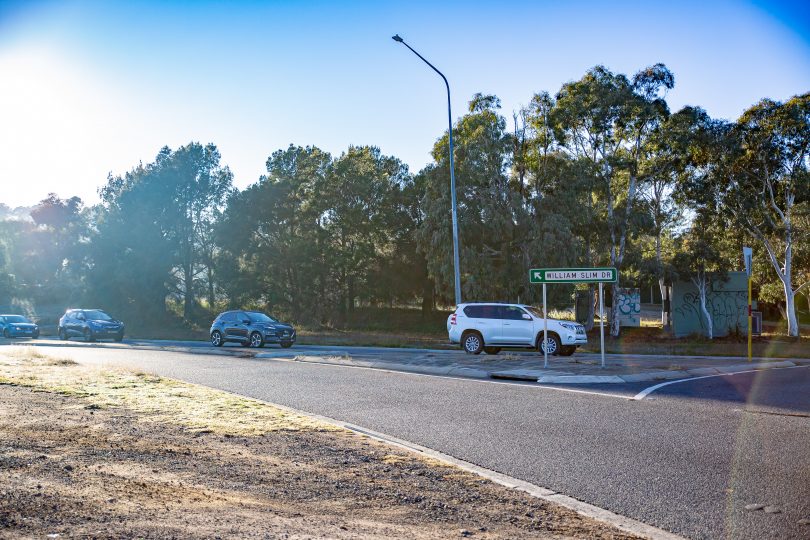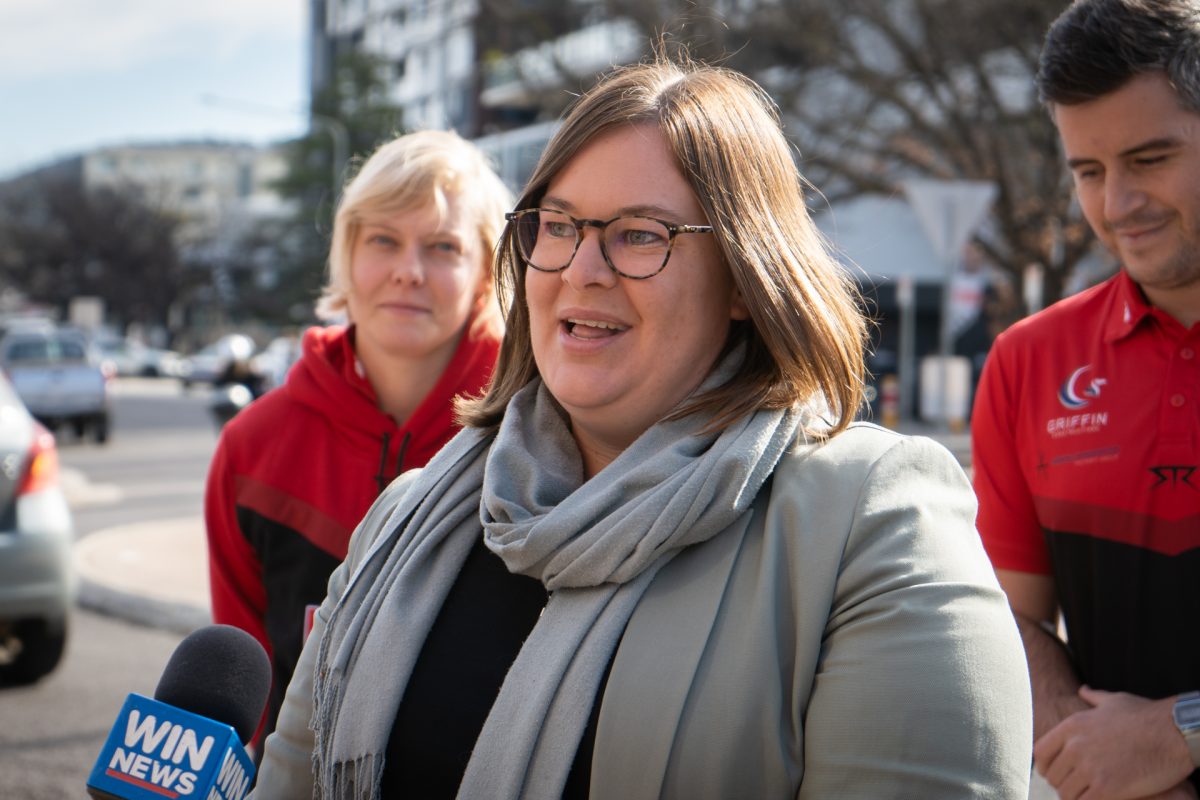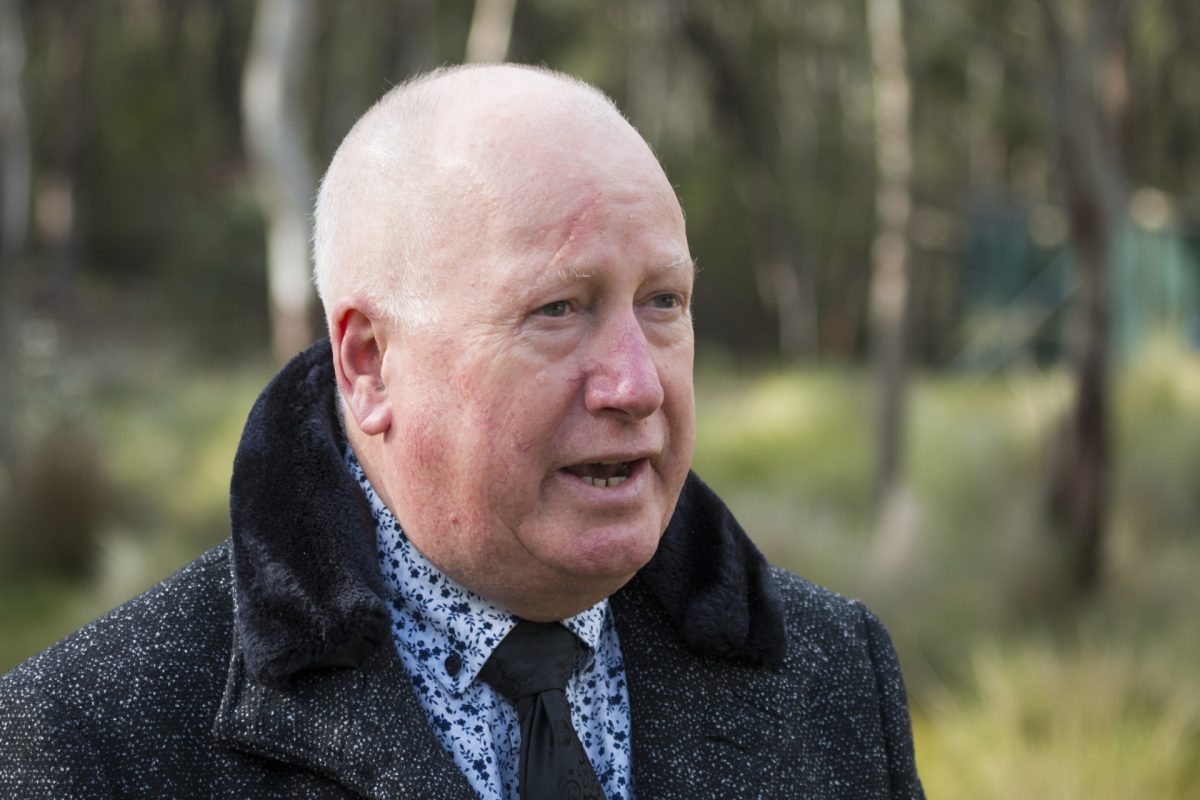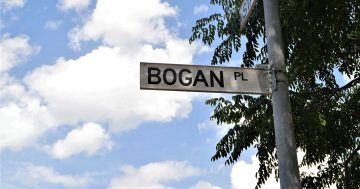
William Slim Drive will be renamed Gundaroo Drive after allegations of abuse emerged against the former governor-general of Australia. Photo: File.
The question of how best to name streets and suburbs after people is proving a complicated one for the ACT Government to grapple with, leading one commenter to suggest the pursuit should be abandoned altogether.
The case of the now renamed William Slim (Gundaroo) Drive is an example of where naming went wrong.
In 2019, the ACT Government announced it would change the road’s name because of sexual abuse allegations against Australia’s 13th governor-general.
The Slim family has denied the accusations.
The name change was officially made in 2021, but it was revealed last week some of the road signs had only recently been taped over.
It’s only one of the issues an Assembly inquiry into memorialisation through public commemoration is currently looking at.
This specific inquiry was kick-started following a petition which called on the government to do more to commemorate and recognise women, non-binary people, people of diverse backgrounds and First Nations leaders in statues, street and suburb names.

Labor backbencher Suzanne Orr sponsored a petition calling on the government to increase the commemoration of women in public. Photo: Region Media.
According to Labor backbencher Suzanne Orr, who sponsored the petition, most people commemorated in public art and street names are men.
Greg Tannahill suggested the ACT should give up entirely on naming streets after people, as it’s “too easy to get things wrong”.
“We keep naming streets and suburbs after people who, 25, 50 years down the track, we look back and go, ‘I don’t think we should have named the place that,'” the former member of the Greens and the Democrats told the committee.
“There are other ways we can name our streets – flora, fauna and out of pure fiction if needs be.”

Minister for Planning and Land Management Mick Gentleman. Photo: Region Media.
But, as the ACT Government’s submission to the inquiry noted, the Territory already has a Place Names Advisory Committee, which gives advice to the Minister for Planning and Land Management Mick Gentleman about naming suburbs and public places and commemorating eminent Australians.
That committee comprises subject experts like historians, Aboriginal and Torres Strait Islander representatives, surveyors and community representatives.
Mr Gentleman said the committee supports the government’s commitment to equality and diversity in the people recognised through public commemoration, which aligns with a range of commitments concerning LGBTIQA+ inclusion and visibility.
Most suburbs are named after notable Australians and the suburbs follow themes. For example, the streets in Mawson are named after Antarctic exploration.
Bonner and Nicholls commemorate First Nations leaders, Neville Bonner AO and Sir Douglas Nicholls, and the road names in Bonner recognise the names of Indigenous leaders and their supporters.
Before naming a suburb or street after a deceased person, the government consults family members and relevant cultural groups to obtain permission.
There are 12 suburbs across the ACT named to commemorate notable Australian women. The government said it is improving gender representation with new names now 40 per cent women and 60 per cent men.
The new suburbs of Denman Prospect, Kenny and Macnamara were all named after notable women.
Mr Gentleman said the government could not report on the number of non-binary people commemorated in ACT place names as this information is only captured if it relates to their contribution, but “gender-inclusive language” has been encouraged in place naming.
Going forward, he said the main opportunity for new place names is the naming of roads and parks in new estates, but public art and schools can also be considered.
The Place Names committee does take public suggestions. To have a suburb or street named in your honour, you must have been deceased for at least 12 months (so you can’t nominate yourself). You can also learn more about why streets and suburbs have been named the way they are online.













